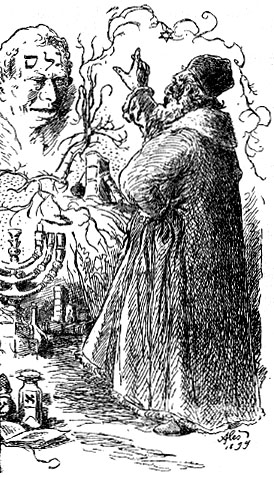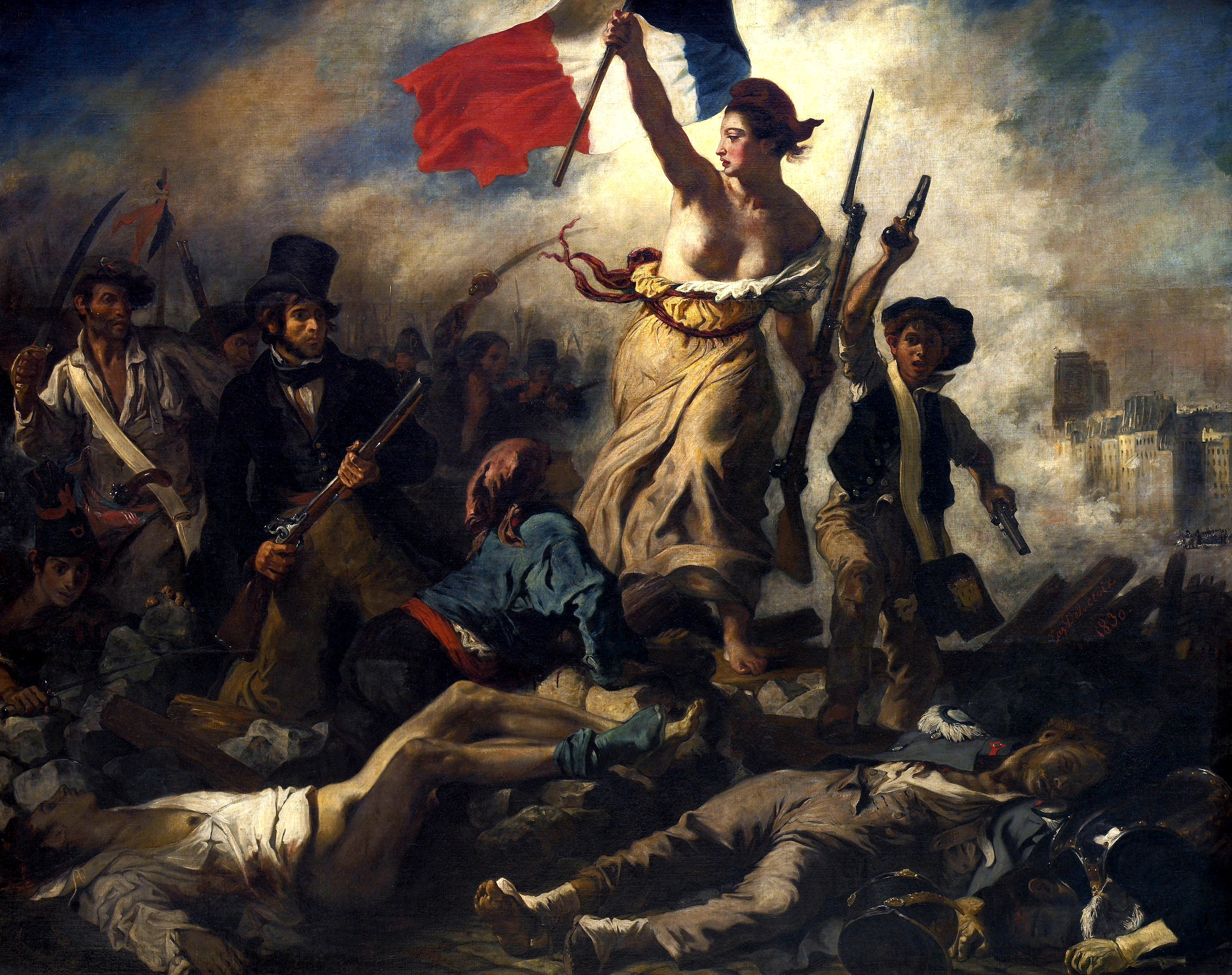Franklin knew that the fledgling nation of America would need a protector if it were to survive in its bid for independence against the great British Empire. Appointed the Ambassador to France in December 1775, while in Europe he secretly visited the nation of Bohemia. There, in a clandestine meeting in the Jewish Quarter of Prague, an ancient rabbi thought to be Judah Loew gave him the final ingredient he needed to create a Golem -- the secret name of God. In return, Franklin shared with Rabbi Loew his secret for exceptional (some might say supernatural) virility, stamina, and eloquence.
After some consideration, he decided to give the golem a female appearance. The Spirit of Liberty, as exemplified by the French Revolution and immortalized by Eugène Delacroix's painting Liberty Leading the People, was a woman, and therefore the mystical symbolism was already strong. He also wanted his golem to be a diplomat and figurehead in addition to being a protector of America, and a lady of good breeding would be able to dazzle the aristocracy and turn chivalry to her political advantage. Finally, a strong woman of maternal bearing would easily rally the common folk and present a formidable image of a mother protecting her young.
He also made her 7 and a half feet tall and modeled it after his favorite French mistress, Madame Anne-Louise d'Hardancourt Brillon de Jouy, mostly because he was a lonely old man and a bit of a pervert.
It took years, but Franklin eventually created his golem, but instead of clay, he crafted it from the materials of the 13 Colonies. Her bones were New Hampshire granite; her muscles were Georgia red clay and her ligaments North Carolina tar. Mud from the Potomac and silt from the Delware formed her skin. Mink fur from New York became her long, lustrous hair; her coal-black eyes came from Pennsylvania, and her teeth were pearls from the cold waters of the Chesapeake Bay. Her tears were water from Boston Harbor, and her blood that of the dead patriots of Bunker Hill.
Her clothes were made of South Carolina cotton and dyed with native indigo (and, rumor has it, sewn by Betsy Ross herself); her gloves and boots were leather made from livestock grown in the fields of New Jersey. The circlet he used to conceal and protect the Hebrew word of life, "Emet", was made from Rhode Island silver crafted by none other than Paul Revere.
And on July 4th, 1787, during Connecticut's most fearsome summer thunderstorm, Benjamin Franklin brought his golem to life using a combination of scientific theory and Kabbalistic ritual. Discovering that she was already highly intelligent and with a voracious appetite for education, he named her Silence Do-Good after one of his more famous alter-egos and took her aboard a ship bound for the Constitutional Convention to meet the delegates.
 |
| Silence practices a speech written by her father as she sails to the convention. |
Needless to say, the delegates were alternately shocked and amazed, thrilled and horrified. Some saw her as an abomination against God; others realized that she was a potent force for good and a powerful weapon for the fledgling democracy. Franklin argued before the others, saying, "None of us are born without sin, yet we all strive toward perfection and grace, even this creature before you. If this be sin, then it be upon my head; but how you make use of this gift is upon yours. Let not your foolish pride doom you and your country. I give you the incarnation of our country, and what you make of our nation, you make of her."
After much deliberation, it was agreed upon by the president of the Constitutional Convention, George Washington himself, that Franklin had indeed given the country a great and powerful gift, but one that needed refinement, and to that end Silence Do-Good would remain under the care of Franklin and would receive the best tutelage from the finest minds America had to offer.
She remained in academic seclusion until 1814.
NEXT: Silence Do-Good and the War Years
The character of Silence Do-Good is copyright Erin Palette 2011. All art in these sections is either public domain, or machinima from the City of Heroes MMO. I do not claim any ownership of art.




Well done.
ReplyDeleteThanks! But I'm not done yet. :)
ReplyDeleteFellas...She's just gettin' warmed up.
ReplyDelete>_<
It is fun and irreverent. A great start!
ReplyDelete